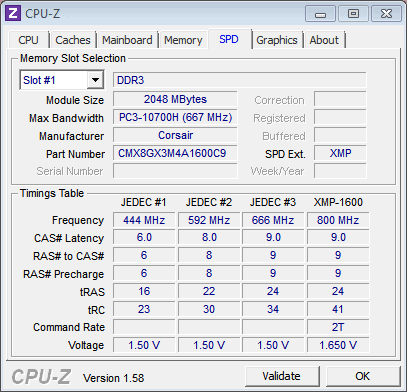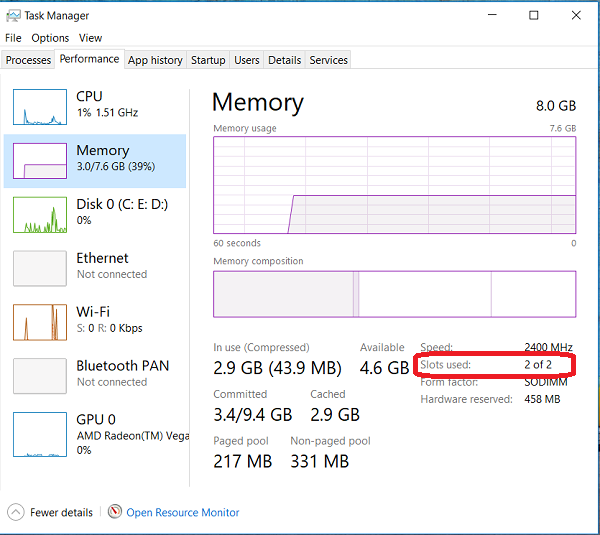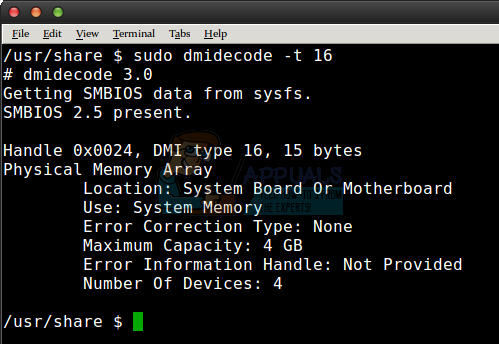Check Free Ram Slots Linux
Upgradeable recommends the CPU-Z scanner tool to identify what type of RAM your computer uses and how many slots there are available. |
Method-1: Using free Command. Free displays the total amount of free and used physical and swap memory in the system, as well as the buffers and caches used by the kernel. The information is gathered by parsing /proc/meminfo. Suggested Read: free – A Standard Command to Check Memory Usage Statistics (Free & Used) in Linux. Here is the quick guide to identify your ram, the number of slots and how much it will cost. We are assuming you have downloaded CPU-Z from their website. The trick with CPU-Z is not to look in the Memory tab but use the SPD tab. You can see how many RAM slots your computer has by using the 'Slot 1' drop down list.
Here is the quick guide to identify your ram, the number of slots and how much it will cost. |
Tips for a compatible upgrade
Match new RAM to your existing ram speed. You do not get a speed increase mixing fast and slow ram, it always defaults to the slowest speed. There is a chance the new RAM will not be compatible. So there is no upside, and all downside - not a good bet.
Use the computer model information to search Upgradeable for your model. We do not charge more for brand specific RAM. Do not assume you can use 8GB or 16GB modules by default. Some models are limited to the amount of RAM it can use. If you are unsure internet search your model with 'max ram'. If your computer has 2 slots and the maximum RAM is 16GB then the biggest module you can use is 8GB. However if the maximum ram is 8GB then the largest module you can use is 4GB. This is number one reason for incompatible RAM.
We're here to help, Call Us!
1800-289-726
covid19 news: we are open
Order History
Modify Profile
Change Password
This is our sixth post on getting hardware information. In this post we will see how to get RAM details such as size, speed, make, maximum capacity allowed RAM etc. We already covered some hardware related stuff in this series so far as given below.
Get BIOS, Firmware, Hardware And Drivers Details in Linux/Unix
Example1: Find RAM size(Total, available, used) in Linux. We can use below five methods to get details.
free
Want to understand free command output? check our post on free command.
Output:
top
Check our excelent post to understand Linux top command output.
Output:
Output:

Output:

dmidecode –type memory
or
dmidecode -t 17
Output:

Example 2: Get RAM information like location, Maximum capacity of RAM supported, number of RAM devices present and sa lot info.
Output:
Example 3: Find RAM information like Type of RAM(SD RAM or DDR2/3), Speed, Manufacture etc
Check Free Ram Slots Linux Downloads
Output:
Check Free Ram Slots Linux Mint
In our next post in this series we will see BIOS and Processer details.
Check Free Ram Slots Linux Software
 The following two tabs change content below.
The following two tabs change content below.
- Docker: How to copy files to/from docker container - June 30, 2020
- Anisble: ERROR! unexpected parameter type in action:
Fix - June 29, 2020 - FREE: JOIN OUR DEVOPS TELEGRAM GROUPS - August 2, 2019
- Review: Whizlabs Practice Tests for AWS Certified Solutions Architect Professional (CSAP) - August 27, 2018
- How to use ohai/chef-shell to get node attributes - July 19, 2018